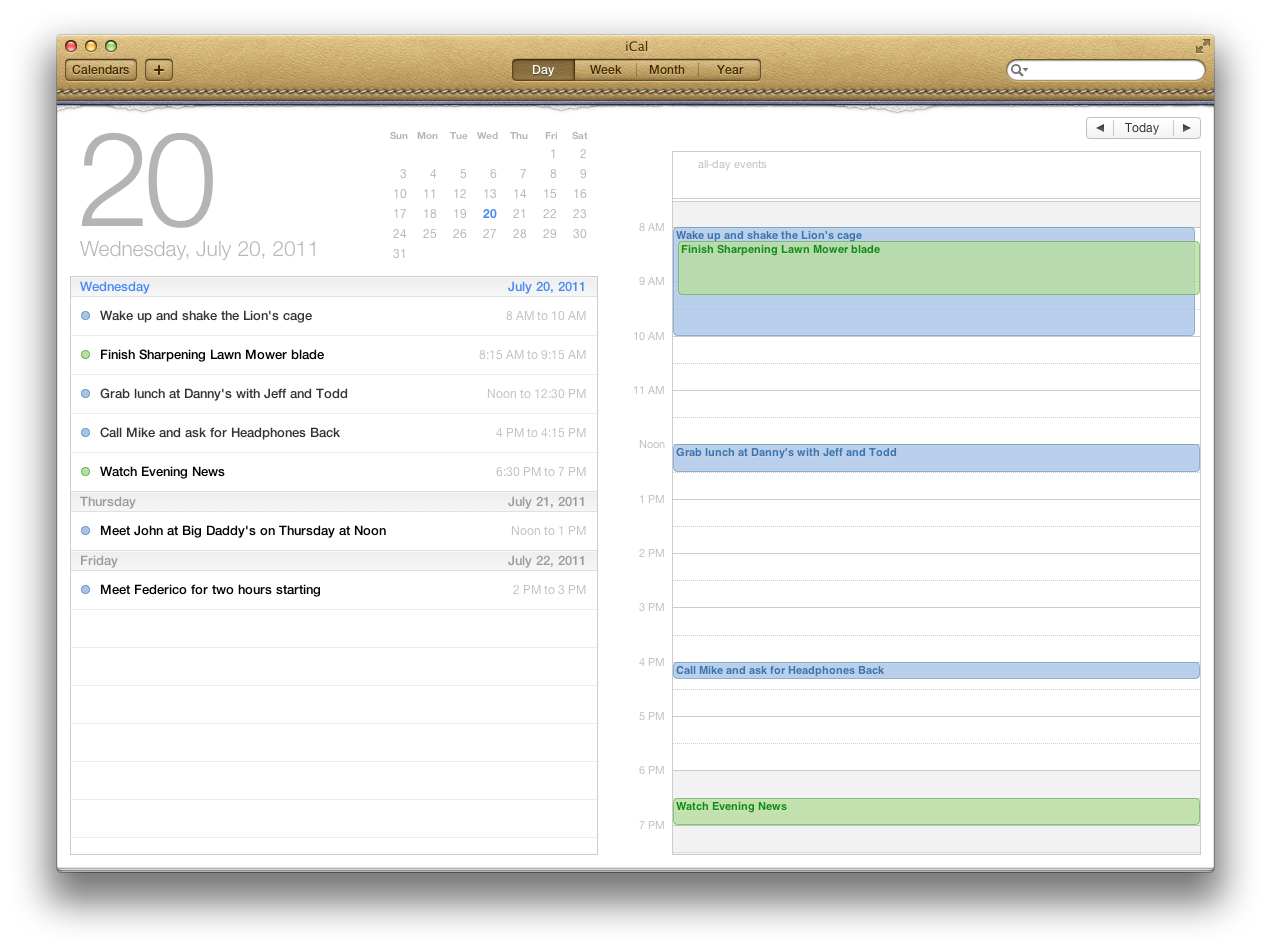Pros and cons of skeumorphism
Skeumorphism is a fancy term which is used to describe interfaces which mimic other objects.
Take this example (image via macstories):

The interface of iCal clearly mimics a physical calendar, with its torn pages and stitching.
Benefits of skeumorphism
Even though skeumorphism has only recently become a widely discussed design term, its products have been with us for a very long time. Look no further than the computer desktop, with its file system, folders and trash can.
In the Semantic Turn, Klaus Krippendorf outlines the process a person goes through when presented with a new object or interface.
- Working out what it is e.g. if I need a calendar, can I recognise this as a calendar?
- Understanding how it works e.g. how is this calendar used to record appointments?
- Learning to use it instinctively e.g. does the calendar become such a good tool that I no longer have to think when using it?
Skeumorphism is powerful because it helps with all three of the above. By piggybacking on a user’s existing knowledge of objects and interfaces a designer can achieve good usability faster.
Lets take iCal as an example.
- I see iCal and immediately know it’s a calendar.
- I understand the gist of how iCal works from having used a paper calendar i.e. I flick between months, and write reminders in each square.
- Having progressed through 1 and 2 so quickly, I can internalise the rest of the features and get familiar with the interface/object faster.
Criticism of skeumorphism
I’ve heard a lot of criticism for this approach to design. They can be largely classified as follows:
- It’s lazy. Will we be using these well worn references forever? Where’s the room for innovation?
- Meaning changes over time. Many people using iCal may never have used a traditional paper calendar.
- Analogies can break down. In iCal when moving forward a month the page is ripped off. When moving back a month the page magically reappears.
- Not making the most of new media. Computers are more capable than paper calendars, so simply immitating a paper calendar is wasteful.
Striking a balance
People who wholly reject skeumorphism are missing out on a powerful design tool. Beyond the usability advantages outlined above, skeumorphism is also a way of making an interface culturally relevant, and delightful.
I think the best way to think of skeumorphism is as a metaphor. If it makes a poor metaphor then don’t use it. For instance, many web sites have started featuring background images of wooden textures. This is a purely aesthetic decision, and is pretty kitsch.
Like any design tool it’s about using it properly, and after the current fad dies down it will probably be used in a more restrained, intelligent way.